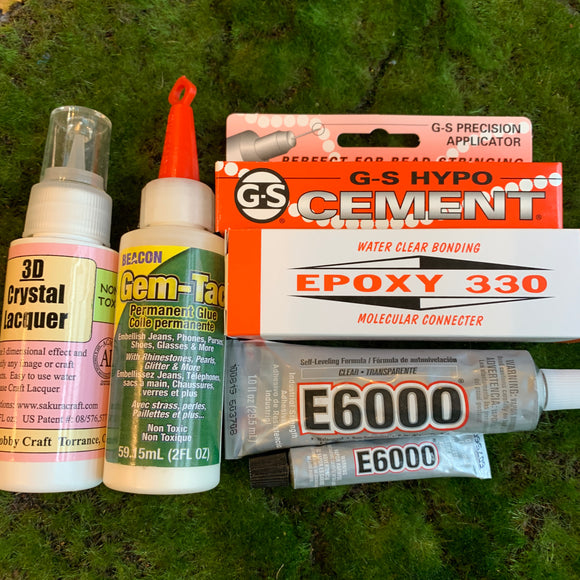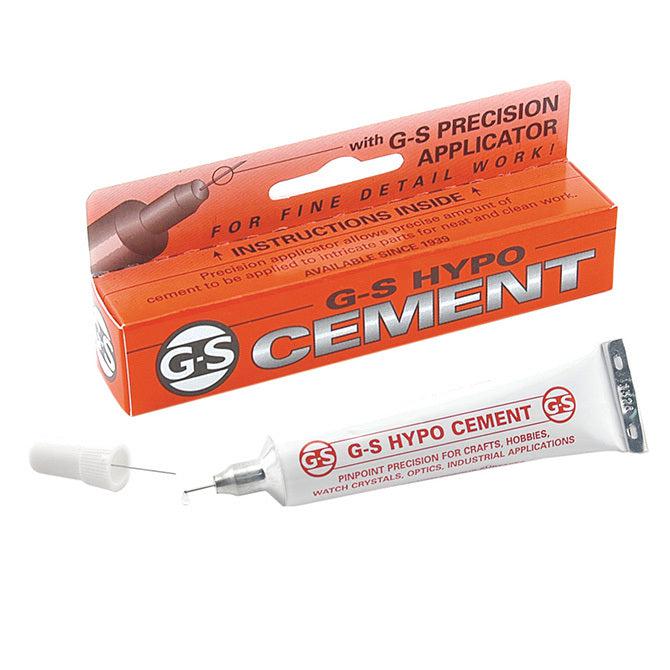Gs Hypo Cement and E6000 are both popular adhesives, but E6000 is known for its stronger bond and versatility compared to Hypo Cement. When choosing between the two, consider the specific needs of your project and the level of durability required.
E6000 is ideal for heavy-duty projects and a variety of materials, while Hypo Cement is more suitable for delicate and intricate work such as jewelry making or crafting. Understanding the differences between these adhesives will help you make an informed decision based on the specific requirements of your project.
Let’s delve deeper into the key features and applications of Gs Hypo Cement and E6000 to help you decide which one is the right choice for your next crafting endeavor.
Introduction To Adhesives
Adhesives play a critical role in crafting. They are essential for joining materials together and creating beautiful works of art. Two popular adhesives among crafters are Gs Hypo Cement and E6000. Both adhesives are strong and versatile, but they have some key differences.
| Adhesive | Pros | Cons |
|---|---|---|
| GS Hypo Cement | Strong, dries clear, precision tip for accuracy | Not suitable for heavy-duty projects |
| E6000 | Very strong, waterproof, heat-resistant | Strong odor, long curing time, can be messy |
When choosing between Gs Hypo Cement and E6000, consider the project at hand. If you need a precise and clear adhesive for delicate work, Gs Hypo Cement may be the better choice. If you require a heavy-duty and waterproof adhesive, E6000 may be more suitable. Ultimately, both adhesives have their strengths and weaknesses, and it’s important to choose the one that best fits your needs.
Gs Hypo Cement At A Glance
Gs Hypo Cement is a clear, water-resistant adhesive that is perfect for delicate jewelry and watch repair. Its composition includes toluene, which makes it highly flammable, and a precision applicator allows for controlled and precise application. The adhesive sets quickly and creates a strong and durable bond. Gs Hypo Cement is ideal for bonding non-porous materials such as metal, glass, and ceramics, making it a popular choice for various crafting and jewelry-making applications.
The composition of Gs Hypo Cement includes toluene, a clear liquid with a sweet smell, and a rubbery texture when dry. It is known for its quick-drying and strong bonding properties. Gs Hypo Cement is water-resistant and can withstand exposure to various solvents, making it suitable for applications that require durability and resilience.
Gs Hypo Cement is widely used for attaching beads and rhinestones to fabrics, bonding metal jewelry findings, and securing knots in thread and cord. Its precision applicator makes it suitable for detail-oriented tasks, and its clear finish ensures that it does not detract from the appearance of the finished piece.
E6000 Characteristics
| E6000 Characteristics |
| Chemical Makeup |
E6000 is a popular adhesive known for its strong bonding capabilities. It is composed of a unique chemical formula that allows it to adhere to a wide variety of materials including wood, metal, glass, fabric, and more. This versatility makes it a go-to choice for various applications such as jewelry making, crafting, and DIY projects.
One of the key characteristics of E6000 is its flexibility. Once cured, it maintains its flexibility, allowing it to withstand vibrations, impacts, and even extreme temperature changes. This makes it ideal for projects that require durability and long-lasting hold. Additionally, E6000 dries clear, ensuring a clean and seamless finish.
Its strong bond strength and resistance to moisture, chemicals, and UV rays further contribute to its reliability. Whether you’re working on jewelry repairs, creating mixed media art, or bonding different materials together, E6000 provides a strong and durable hold that can withstand the test of time.
Adhesion Strength And Durability
Gs Hypo Cement Vs E6000 offers a comparison of their adhesion strength and durability. Both adhesives provide strong bonding power, but Gs Hypo Cement is known for its precision application and quick drying time. On the other hand, E6000 exhibits excellent adhesion to a variety of materials and provides long-lasting durability. When it comes to longevity of materials, Gs Hypo Cement is preferred for delicate crafts and jewelry, while E6000 is favored for industrial and outdoor applications.
Ease Of Use And Precision
Gs Hypo Cement and E6000 both offer ease of use and precision in their application. While Gs Hypo Cement provides a fine precision applicator for delicate projects, E6000 offers a strong, clear adhesive for more robust bonding needs. Each product caters to specific crafting requirements with user-friendly precision.
| GS Hypo Cement | E6000 |
| Comes in a precision applicator tube | Applicator nozzle for controlled application |
| Easy to control and apply | Precise application for intricate projects |
| Dries clear and leaves no residue | Dries clear and is paintable |
| Easy to clean with acetone | Clean-up with acetone or citrus-based solvents |
Curing Time And Clamping
Curing time and clamping are important considerations when comparing Gs Hypo Cement and E6000. These adhesives have different drying times, with Gs Hypo Cement typically setting faster than E6000. Additionally, Gs Hypo Cement does not require clamping, while E6000 may benefit from clamping to ensure a secure bond.
Choose the adhesive that best suits your project’s needs.
| Curing Time and Clamping |
| Setting Periods |
| Gs Hypo Cement has quick setting period of 10-15 minutes. |
| E6000 requires longer curing time of 24-72 hours. |
| Clamping is necessary for both adhesives to ensure strong bond. |
Flexibility And Resistance
Discover the differences between Gs Hypo Cement and E6000 in terms of flexibility and resistance. Gs Hypo Cement offers precise control and dries clear, making it ideal for delicate projects. E6000, on the other hand, provides industrial-strength bonding and is resistant to water, chemicals, and high temperatures.
| Gs Hypo Cement | E6000 |
| Offers precision for delicate projects | Provides strong bond for heavy-duty tasks |
| Not recommended for outdoor use | Resistant to various environmental conditions |
| Perfect for projects that require fine detailing | Great for projects that need flexibility |

Safety And Toxicity
Gs Hypo Cement and E6000 are both popular adhesives, but differ in their safety and toxicity levels. Gs Hypo Cement is considered safe for jewelry making due to its low toxicity and fume levels, while E6000 may pose health risks with prolonged exposure to its strong fumes and potential skin irritation.
| Health Precautions | Ventilation Requirements |
| Use gloves and protective eyewear when handling these adhesives. | Work in a well-ventilated area to minimize exposure to fumes. |
| Avoid skin contact and inhalation of fumes for safe usage. | Open windows or use a fan to improve air circulation during use. |
Cost Comparison
Compare the costs of Gs Hypo Cement and E6000 to determine which adhesive is the most affordable option for your crafting needs. These adhesives differ in price and may have varying benefits, so it’s important to weigh your options before making a decision.
| Price Points | Gs Hypo Cement | E6000 |
| Cost | Affordable | Slightly higher |
| Quantity | Less | More for the price |

User Experiences And Reviews
Discover the ultimate battle between Gs Hypo Cement and E6000 through user experiences and reviews. Uncover the pros and cons of each adhesive, helping you make an informed decision for your crafting needs.
| User Experiences and Reviews |
| Crafters’ Testimonials |
| Many crafters have shared their experiences with Gs Hypo Cement and E6000. Most testimonials praise the precision and quick drying time of Gs Hypo Cement. On the other hand, E6000 is favored for its durability and strength. It’s important to consider your specific crafting needs and the materials you’ll be working with. Some experts recommend using Gs Hypo Cement for delicate projects, while E6000 is suggested for heavy-duty applications. Ultimately, the choice between the two often comes down to the specific requirements of the project at hand. |

Frequently Asked Questions
Is Gs Hypo Cement Better Than E6000?
Gs Hypo Cement is a great adhesive for precision work with small components, while E6000 is known for its strength and flexibility. The choice depends on the project’s specific needs.
Can Gs Hypo Cement And E6000 Be Used On The Same Project?
Yes, both adhesives can be used together. Gs Hypo Cement is perfect for precision work, while E6000 provides a strong bond and flexibility.
How Long Does It Take For Gs Hypo Cement And E6000 To Dry?
Gs Hypo Cement dries in about 10 to 20 minutes, while E6000 takes up to 24 hours to fully cure. It’s important to follow the manufacturer’s instructions for best results.
Is Gs Hypo Cement Or E6000 Waterproof?
Yes, both adhesives are waterproof. Gs Hypo Cement and E6000 are perfect for outdoor projects, as they can withstand exposure to water and other elements.
Conclusion
When comparing Gs Hypo Cement and E6000, both adhesives have their unique strengths and applications. Gs Hypo Cement offers precision and versatility, making it ideal for delicate projects and jewelry making. On the other hand, E6000 provides a strong and durable bond, perfect for heavy-duty repairs and industrial applications.
Ultimately, the choice between these two adhesives depends on the specific needs of your project. Consider the materials, level of precision required, and desired durability to make an informed decision.

